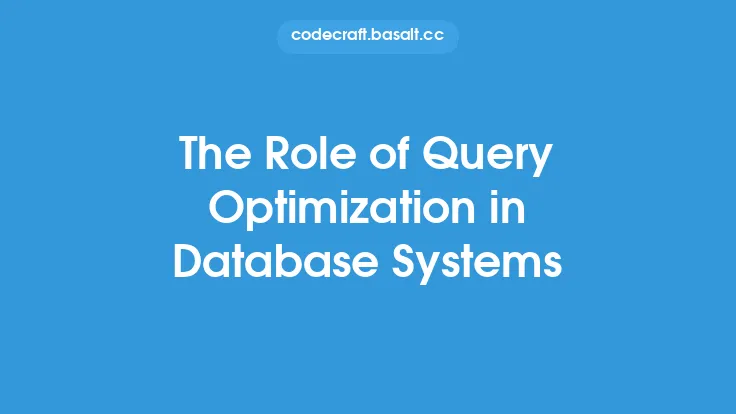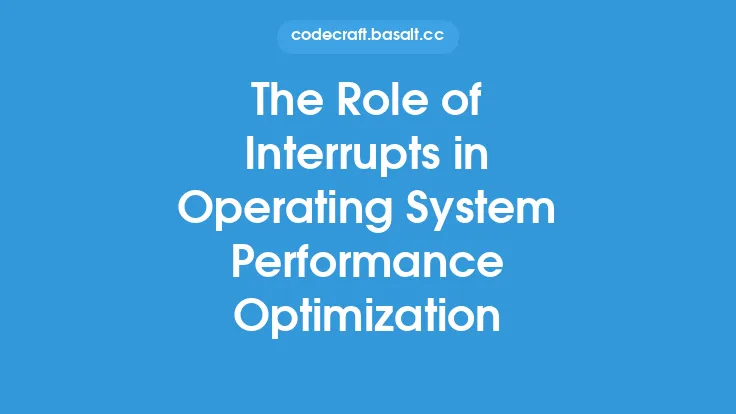Caching is a fundamental technique used to optimize database performance by reducing the time it takes to retrieve data from storage. In a database system, caching involves storing frequently accessed data in a faster, more accessible location, such as RAM, to minimize the number of times the database needs to access slower storage devices like hard drives. This approach can significantly improve database performance, reduce latency, and increase throughput.
What is Caching?
Caching is a mechanism that stores data in a temporary location, called a cache, to provide faster access to that data. The cache acts as a buffer between the database and the application, storing frequently accessed data in a location that is closer to the application. When the application requests data, the cache is checked first, and if the data is found, it is returned directly from the cache. If the data is not found in the cache, the request is forwarded to the database, and the data is retrieved from storage.
Types of Caching
There are several types of caching that can be used to optimize database performance, including:
- Query caching: This type of caching stores the results of frequently executed queries in a cache, so that the next time the query is executed, the results can be retrieved from the cache instead of being recalculated.
- Data caching: This type of caching stores frequently accessed data in a cache, so that the data can be retrieved quickly without having to access slower storage devices.
- Result caching: This type of caching stores the results of complex calculations or queries in a cache, so that the next time the calculation or query is executed, the results can be retrieved from the cache instead of being recalculated.
- Page caching: This type of caching stores entire pages of data in a cache, so that the data can be retrieved quickly without having to access slower storage devices.
How Caching Works
The caching process involves several steps, including:
- Cache initialization: The cache is initialized, and a cache manager is responsible for managing the cache.
- Cache population: The cache is populated with data, either by loading data from the database or by storing the results of queries.
- Cache lookup: When an application requests data, the cache is checked to see if the data is stored in the cache.
- Cache hit: If the data is found in the cache, it is returned directly from the cache.
- Cache miss: If the data is not found in the cache, the request is forwarded to the database, and the data is retrieved from storage.
- Cache update: The cache is updated with new data, either by loading data from the database or by storing the results of queries.
Benefits of Caching
Caching provides several benefits, including:
- Improved performance: Caching can significantly improve database performance by reducing the time it takes to retrieve data from storage.
- Reduced latency: Caching can reduce latency by providing faster access to data.
- Increased throughput: Caching can increase throughput by allowing more requests to be processed in a given amount of time.
- Reduced load on the database: Caching can reduce the load on the database by minimizing the number of requests that need to be processed.
Cache Replacement Policies
Cache replacement policies are used to determine which data to remove from the cache when it becomes full. Common cache replacement policies include:
- Least Recently Used (LRU): This policy removes the data that has not been accessed for the longest period of time.
- First-In-First-Out (FIFO): This policy removes the data that was added to the cache first.
- Most Recently Used (MRU): This policy removes the data that was accessed most recently.
- Random Replacement: This policy removes a random piece of data from the cache.
Cache Size and Configuration
The size and configuration of the cache can significantly impact database performance. A cache that is too small may not provide sufficient benefits, while a cache that is too large may waste resources. The optimal cache size and configuration will depend on the specific database and application requirements.
Caching in Distributed Database Systems
In distributed database systems, caching can be used to optimize performance by storing data in multiple locations. This can help to reduce latency and improve throughput by providing faster access to data. However, caching in distributed database systems can also introduce additional complexity, such as cache consistency and cache coherence.
Caching and Database Transactions
Caching can interact with database transactions in complex ways. For example, if a transaction modifies data that is stored in the cache, the cache may need to be updated to reflect the changes. Additionally, if a transaction is rolled back, the cache may need to be updated to reflect the original state of the data.
Best Practices for Implementing Caching
Best practices for implementing caching include:
- Monitor cache performance: Monitor cache performance to ensure that it is providing the expected benefits.
- Optimize cache size and configuration: Optimize cache size and configuration to ensure that it is providing the best possible performance.
- Use cache replacement policies: Use cache replacement policies to determine which data to remove from the cache when it becomes full.
- Consider cache consistency and coherence: Consider cache consistency and coherence in distributed database systems.
- Test and evaluate caching: Test and evaluate caching to ensure that it is providing the expected benefits and to identify areas for improvement.





